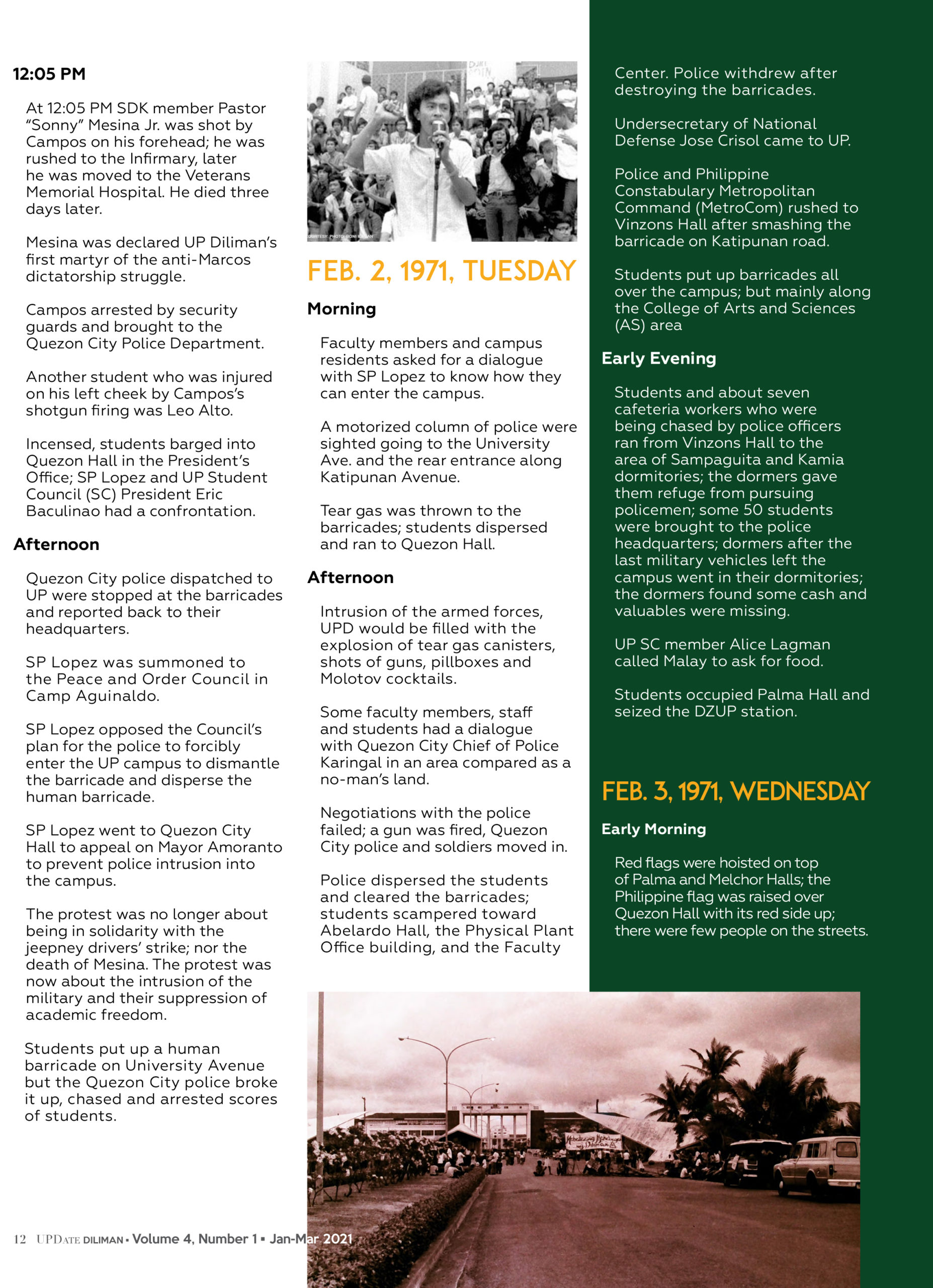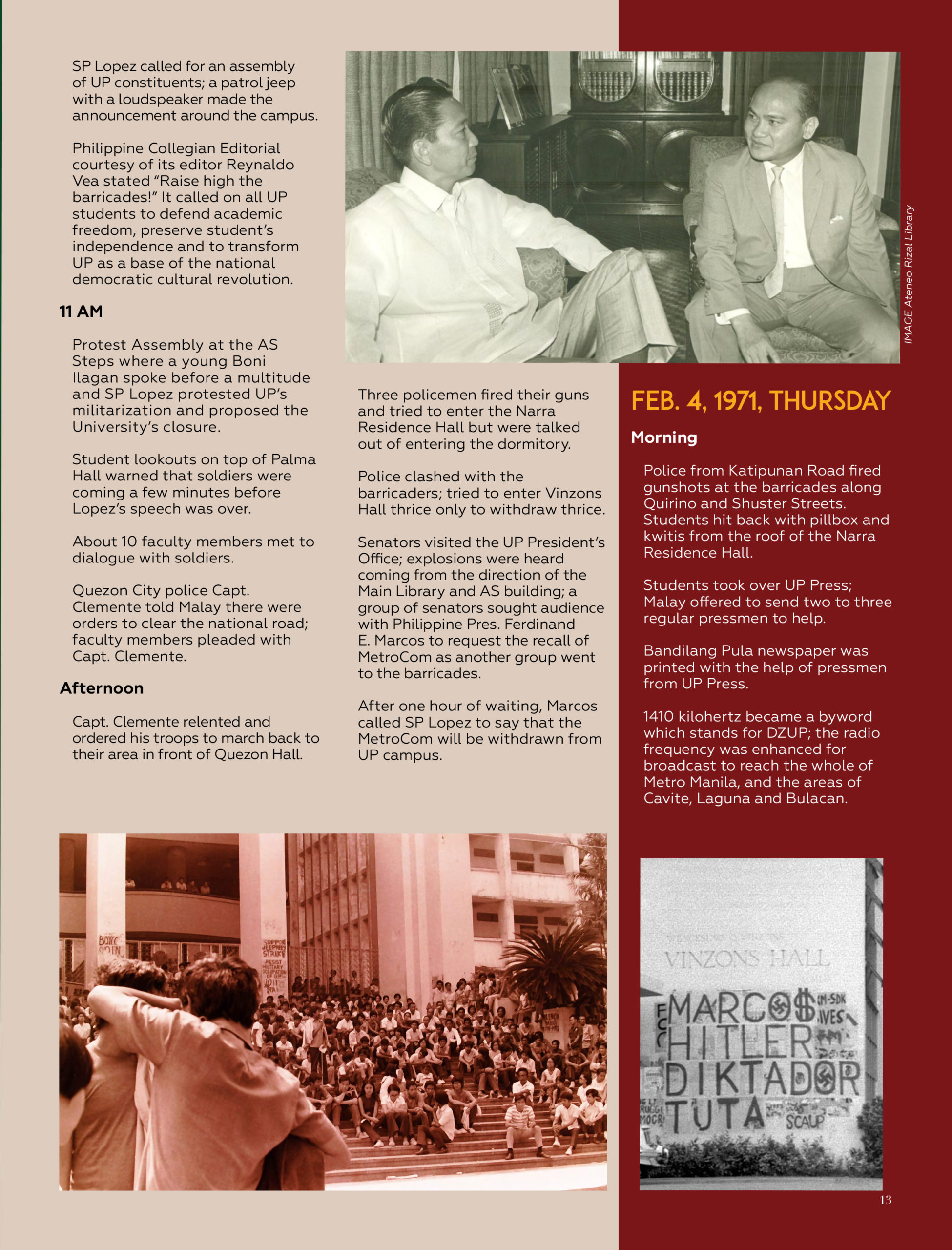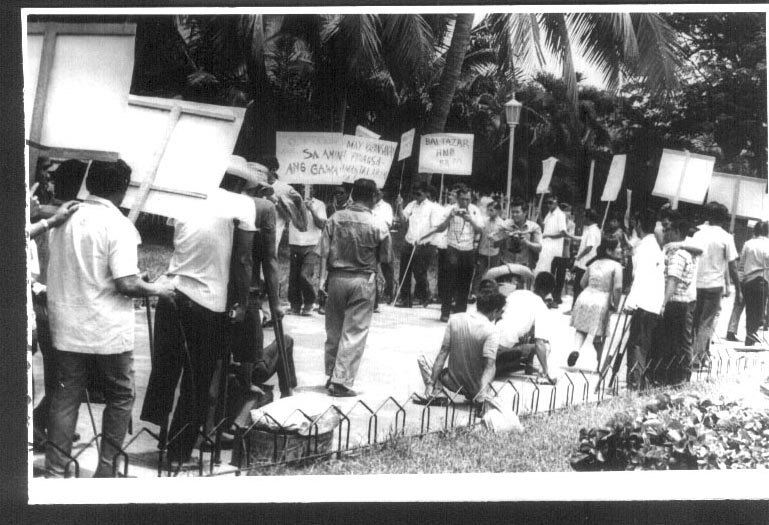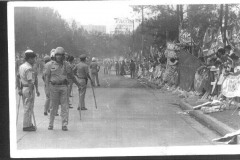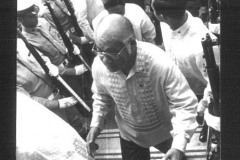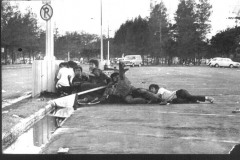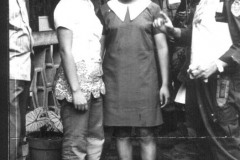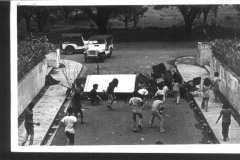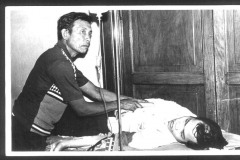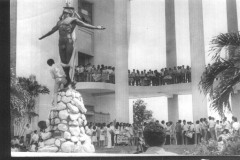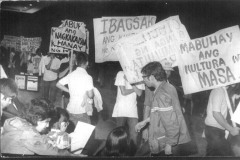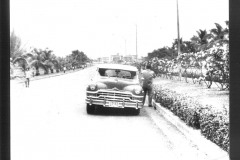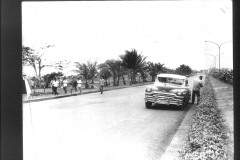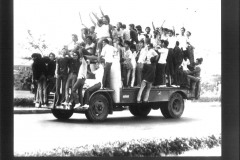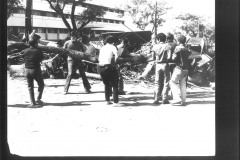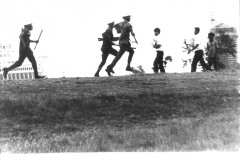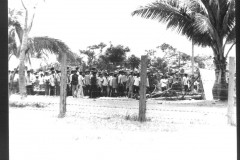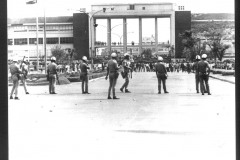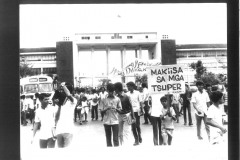These scanned photos of the Diliman Commune of 1971 were retrieved from the hard drive of Engr. Monram. These are being reposted in their original quality and for educational purposes only. We will update the description when more information about the origins of these digital scans come in.
On the other hand, the Diliman Commune Timeline is an infographic by UPDate, the UP Diliman Office for Initiatives in Culture and the Arts, and Jefferson Villacruz.
Monram posted the following in January 2021:
The Diliman Commune of February 1-9, 1971
In celebration of its 50th anniversary
On the second day of the Diliman Commune, Feb. 2, barricades that were removed by the police in the afternoon of the first day were set up again. Students carted tree trunks, rocks and other materials to the University Avenue, the main entrance to the campus. More groups of students reinforced the barricades.
A motorized column of policemen and Metrocom troopers with gas masks arrived on University Avenue at 11 AM. They lobbed tear gas bombs at the barricades and the students retreated to a position nearer Quezon Hall.
What happened next is described in the Diliman Commune Report:
“In view of these developments, a group of faculty members were deputized to negotiate with Colonel Karingal and his forces. They crossed ‘no-man’s land’, met with Colonel Karingal in the vicinity of the old checkpoint and appealed to him to withdraw his men and give the University authorities time to solve the barricade problem. But Colonel Karingal replied that he had orders to move in unless the barricades were removed and gave the students half an hour to do so.”
The deadline passed and the police and the Metrocom troopers moved in, throwing tear gas at the barricades and cleared the roads. The police chased the students as far as the amphitheater, and withdrew. It did not end there.
Quoting the UP Report:
“In the afternoon, the students intensified their activities, consolidating their ranks and erecting more and stronger barricades all over the campus, but mainly in the area of the College of Arts and Sciences.
Late in the afternoon, the barricade in front of the east wing of Sampaguita Residence Hall was set on fire. Shortly thereafter, the military came from two directions, Vinzons Hall and Area 14, removing barricades in their way. They took up positions in the front and sides of Kamia and Sampaguita. Residents and non-residents sought refuge in these dormitories. Gunshots were heard, and simultaneously tear gas was felt. The police ordered the refugees to come out, giving assurance that the girls would not be harmed.
The east and west doors of Sampaguita were forced open. At least five uniformed men wearing gas masks and white helmets were seen on corridor A of Sampaguita and at least two others on corridor B on the second floor. On corridor D of the first floor, two khaki-uniformed men were also seen. They wore no gas masks and no nameplates but had white helmets on.
During this action some fifty students were brought to Police Head-quarters. By 8:30 p.m . the last military vehicles had departed, and the girls went back to their respective residence halls, only to leave again because of the gas. Some discovered the loss of cash and valuables, Later, the girls organized a protest march.”
Other groups of students occupied Palma Hall and took over DZUP and declared the building, “liberated”. Other students occupied the Engineering Building (Melchor Hall) and took over the transmission facilities of DZUP at the top floor of the building. They secured their position by putting up barbed wire obstacles along the stairs leading to the top floor, the irongril gates at the entrance of the building secured with wire. Thus, started the broadcasts of “Radio Libre”.

